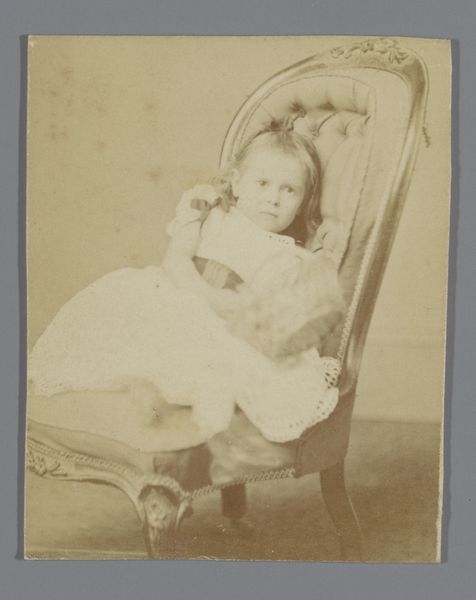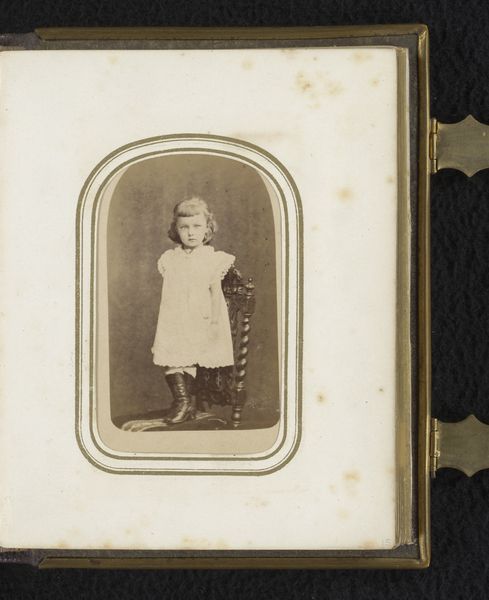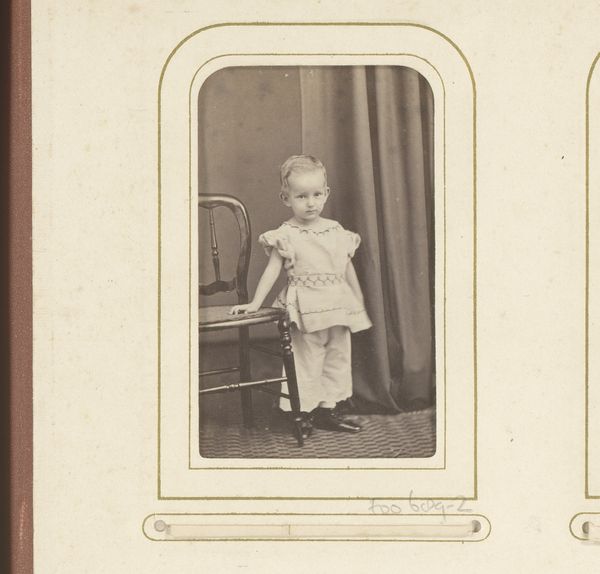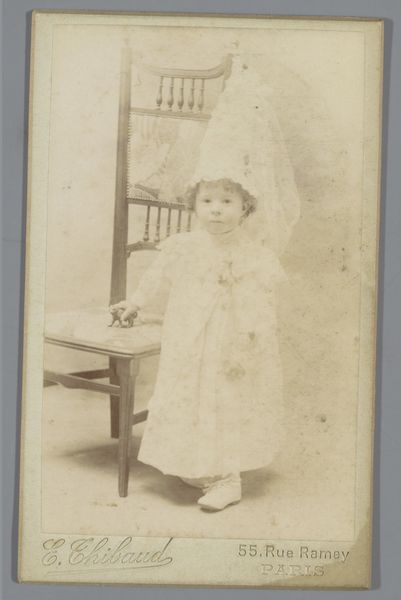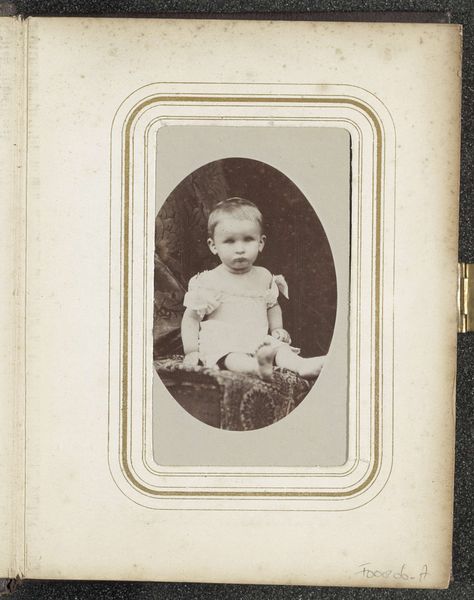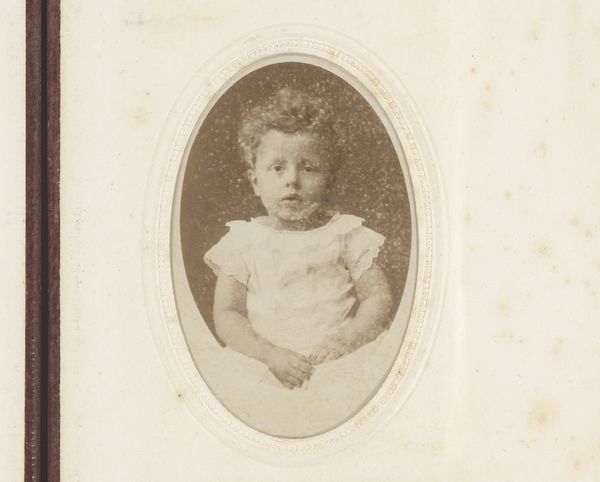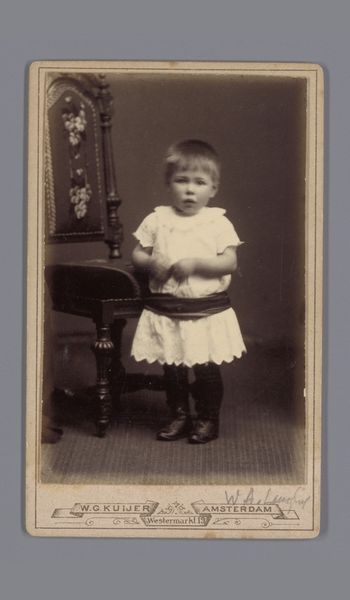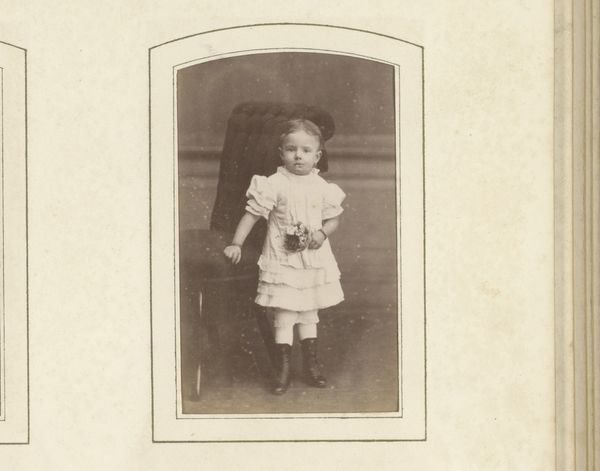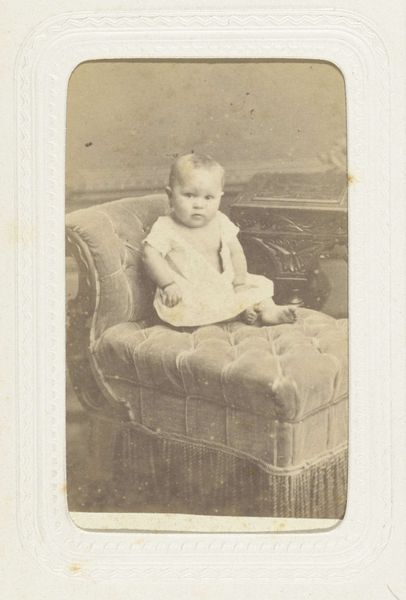
Portret van een peuter in een witte jurk staand bij een stoel c. 1875 - 1899
0:00
0:00
photography
#
portrait
#
photography
#
historical fashion
#
coloured pencil
#
19th century
#
genre-painting
Dimensions: height 93 mm, width 58 mm, height 104 mm, width 63 mm
Copyright: Rijks Museum: Open Domain
Editor: Here we have Jacob Kuyper's "Portrait of a Toddler in a White Dress Standing by a Chair," a photograph likely taken between 1875 and 1899. It has this strange, haunting feel. What can you tell us about what might be going on in this image? Curator: It’s fascinating how such a seemingly simple photograph can evoke such feeling. I notice immediately how the child's dress, while seemingly innocent, and the ornate chair represent the rigid societal expectations placed upon children even at that young age. The child is positioned by a piece of furniture. This signifies the child’s belonging to their household and upbringing under their family’s environment. Editor: Do you think that's a bit of a stretch? The chair is just…there, right? Curator: Consider it further. Notice the white dress of the child – an indicator of purity but also constraint. These symbols often serve a dual purpose; to protect innocence, while also projecting a kind of social ideal onto them. The image seems both intimate and performative. The family may have hoped that it would show how happy the toddler's early upbringing may have been, following societal expectation, or show what aspirations they hold for them. Editor: That makes a lot more sense when you put it that way. It’s interesting how an everyday object, like a chair, can be laden with so much symbolic meaning. Curator: Indeed, the most powerful images often work on multiple levels. They are not just about what they depict, but about what those depictions tell us about the values and anxieties of the time. This invites us to think critically about cultural memory. What memories, expectations, anxieties, or ideals did their family imprint on this child, intentionally or unintentionally? Editor: That gives me a lot to think about next time I encounter portraiture. Thanks so much. Curator: My pleasure. It is by decoding the symbolic languages of the past that we come to understand ourselves more deeply.
Comments
No comments
Be the first to comment and join the conversation on the ultimate creative platform.
